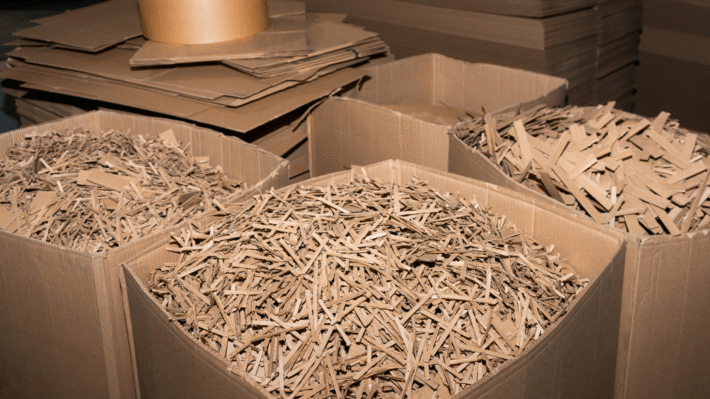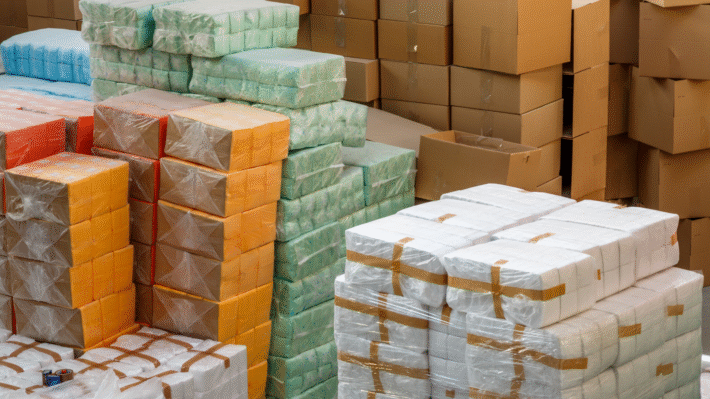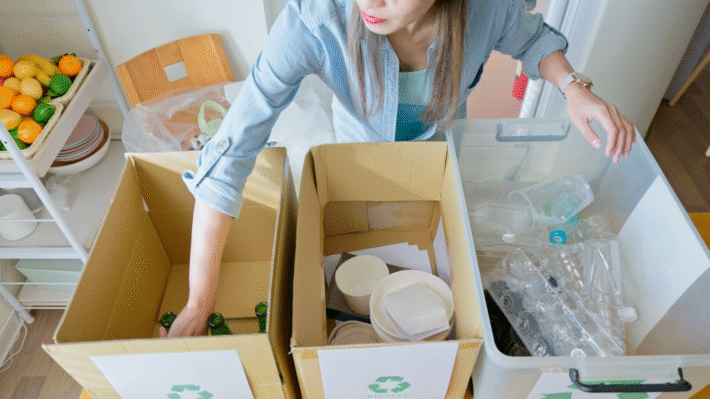Synergize Your Office by Embracing Circularity in Office Furniture Lifecycle

Welcome to the inspiring world of Office Furniture Circularity where we bid farewell to the old-fashioned “take-make-dispose” model and warmly welcome a more sustainable future. If your curiosity tickles at the notion of take-back programs, key factors like refurbishment, redistribution, and rehoming of used office furnishings may cross your mind. Imagine how we could turn the tide on landfill waste and resource depletion, extending the lifetimes of products that have a lot more to offer! Picturing such a transformation brings a sense of hope, doesn’t it? Dear reader, stick around, as we embark on a journey filled with facts and creativity, upscaling the office furniture industry into its sustainable version. Adventure awaits us as we explore how a circular supply chain could redefine our path towards an economical and environmental revolution!
Understanding Office Furniture Circularity
When it comes to the world of office furniture, it might surprise you to learn there’s a big problem lurking beneath those glossy desks and comfortable swivel chairs. And while it may not be solving world hunger, it’s an issue that’s close to my heart, and hopefully, by the end of this article, dear reader, it will be closer to yours too. Now, what exactly is this issue?
Current Problems in Office Furniture
Waste in Landfills
Each year, tons and tons of perfectly salvageable office furniture ends up in landfills. It’s a little like throwing away a banana because it has a single bruise. And you know what’s even worse than tossing a perfectly good chair or desk? The fact that a single piece of furniture can take centuries to biodegrade.
Resource Depletion
Not only is the waste issue problematic, but we’re using precious resources to create this disposable furniture. From the wood in the desks to the metal in the bolts, our beautiful planet is bearing this burden. And with the rise in home offices, the demand for office furniture is skyrocketing.
Linear Model Challenges
Mainly, the issue lies in the outdated “take, make, dispose” model that the furniture industry has leaned into for decades. It goes somewhat like this: Furniture makers take raw materials, make the furniture, and users dispose of it when it’s perceived as no longer useful. Rinse and repeat. It’s a linear cycle that doesn’t consider the very finite reality of our resources.
The Circular Economy Solution
Now, before you get lost in the doom and gloom, allow me to introduce an exciting concept: the circular economy. Swap out that heavy wastage frown for a hopeful smile as we explore how this can transform the way we use and recycle office furniture.
Benefits of Take-Back Programs
Firstly, let’s talk about take-back programs. These give old furniture a new lease on life, ensuring that every chair, desk, or bookshelf reaches its full lifespan. Not only does this significantly reduce waste, it also provides affordable office furniture options for consumers.
How Refurbishment Works
Refurbishing takes center stage in these programs. Used furniture is collected, assessed, and then given the TLC it needs to shine. It could be as simple as a fresh coat of paint or as complex as a full restoration, bringing a worn-out item back to its former glory.
Rehoming Used Furnishings
Once furniture has been spruced up, it’s time for it to find a new home. Maybe a startup company needs office chairs, or a local school could use new desks. By rehoming refurbished furnishings, we’re extending their usefulness and keeping them out of the landfill.
Goals of Circularity in Furniture
Creating a Sustainable Industry
The end goal here is sustainability. We want to transition from a linear model to a circular one, where furniture is repurposed and reused, rather than discarded. This makes the industry more sustainable and reduces our overall environmental footprint.
Reducing Waste
By adopting a circular model, we can vastly reduce the amount of waste that ends up in our landfills. Instead of tossing out old furniture, we can give it a new lease of life, benefiting both the environment and the economy.
Extending Product Lifecycles
In a perfect world, every piece of furniture would be used for as long as possible. Through refurbishment and rehoming, we can significantly extend the lifecycle of these products. It’s good for your wallet, and it’s even better for the planet.
Stay tuned as we continue to delve deeper into the world of office furniture circularity and understand how we can all play a part in this transformative approach.
Implementing Take-Back Programs
Folks, have you ever wondered what happens to your office chair or desk when it’s time for a new one? More often than not, it sadly ends up in a landfill. But there’s a smarter solution – Take-Back Programs! These programs are all about collecting, assessing, refurbishing, and redistributing office furniture to create a more circular economy.
Understanding the Model
Let’s dig a little deeper into how this works, starting with the first step, Collection and Assessment. You see, when a piece of furniture is returned, it goes through a thorough checkup to determine its condition. Just like a doctor checks your heartbeat, experts examine each piece for any damages, wear and tear, missing parts, and overall usability.
Next comes Refurbishment and Redistribution. This is where the magic happens. Imagine that old, worn-out chair now getting a fresh coat of paint, a new set of screws, maybe even a cushion upgrade! The aim is to bring it back to life, and once it looks as good as new, it’s ready to find a new home. Now isn’t that a thing of beauty? Instead of adding to the heap of waste, we’ve made something old new again!
Key Stakeholders
Now you might be thinking, “Who exactly is running the show?” Well, like a well-oiled machine, a number of key stakeholders work in harmony. Let’s start with Manufacturers. They’re the ones who produce this furniture, and they play a pivotal role in making sure it’s designed and built for longevity and possible refurbishment.
But wait, there’s more. Businesses play a crucial role too. These are essentially the folks who buy the furniture for their offices. Now when they opt for furnitures that can be returned and refurbished, it sends a strong message to manufacturers about their preferences.
What about you and me, the everyday users? That’s where Consumer Participation comes in. When we choose to buy refurbished furniture or return our used ones, we’re making a choice that supports circular economy.
And, of course, we can’t forget about the Refurbishers. These artisans and technicians are the lifeblood of Take-Back Programs. They’re the ones who transform the old into the new, breathing life back into what might have been discarded.
Challenges in Take-Back Programs
It sounds fantastic so far, right? But just like any great endeavor, there are a few kinks to work out. For starters, it often involves additional Cost Issues. Collecting, assessing, and refurbishing furniture does require resources. However, with smart design and efficient processes, these costs can be brought down significantly.
Secondly, there’s the hurdle of Overcoming Consumer Reluctance. People might doubt the quality of refurbished items or feel unsure about the actual impact of these programs. That’s where we come in – by educating and raising awareness about the real, positive impact of this amazing process.
This brings us to our final challenge – Raising Awareness. It’s all about spreading the word, folks! The more people know about the benefits and effectiveness of take-back schemes, the more they’re likely to participate. And that’s the golden-ticket to building a world with less waste, more reuse, and a healthier environment for us all!
So, what do you say? Are you ready to embrace the Take-Back revolution!
Refurbishment Process Details
Looking at your office chair, you might wonder, “Could this be given a second life?” The answer is YES! The process of refurbishing office furniture breathes new life into used items, making them look and function as good as new. Let’s dive in and see how this magic happens!
Assessing Furniture Condition
Before diving into the refurbishment, the first step is to check the condition of the furniture.
Evaluating Condition
The process starts with a thorough condition evaluation of the item. This step is crucial as it determines the work needed to bring the item back to its glory days. This not only includes a performance check (for example, if the drawers of a table slide smoothly or if the chair can adjust its height correctly) but also involves checking for any physical damage like scratches, stains or dents. This procedure is done meticulously by skilled staff who know exactly what to look for.
Categorization Techniques
After the condition evaluation is complete, the furniture is categorized. This could be based on the level of refurbishment needed- items requiring minor repairs like patch-ups and paint jobs could be categorized under light refurbishment, while those needing part replacements or structural changes could go under heavy refurbishment.
All of this meticulous categorization helps prioritize the work and identifies the resources required for the refurbishment process.
Refurbishment Methods
Now, let’s shed some light on the refurbishment methods that make the old furniture look all shiny and new again.
Reupholstery Techniques
When it comes to chairs and sofas, reupholstery serves as a magical wand. Fabric or leather looking a bit worn out or faded? Old stuffing is making the seating less comfy? Never fear! A makeover with high-quality, durable, and visually pleasing fabric not only renews the appearance but also boosts the comfort of the furniture.
Repainting and Repairs
Repainting and minor repair works can do wonders for metal and wood furniture. A new coat of paint can spark up a dull looking desk, whereas a quick fix to that wobbly table can make it sturdy again.
Functionality Upgrades
Functionality upgrades are also provided where necessary to ensure the renewed furniture meets the needs of modern office environments. Outdated office desks can be upgraded with simple yet effective addons like cable-management systems, making them perfect for current tech-intensive workplaces.
Ensuring Quality in Refurbishment
Last but not least, quality assurance is a key part of the refurbishment process, as we won’t compromise on safety or functionality.
Safety and Ergonomic Standards
A renewed chair feel and look good, but does it support a normal sitting posture? A refurbished table might shine, but is it stable enough? Safety and ergonomics are never compromised – the refurbished items not only look good but are good for you too.
Certifications and Warranties
Certain refurbishment operations also offer certifications confirming their adherence to high-quality standards. This plants a seed of reliability and trust in the consumers. In addition, warranties might be provided to ensure peace of mind.
Environmental Considerations
Thinking about the environment, aren’t we? The refurbishment process involves the use of eco-friendly practices whenever possible. Non-toxic materials are used for repainting, waste is minimized, and old parts are properly recycled or disposed of, making every effort to reduce the environmental footprint.
So, there you have it. From assessment through refurbishment methods to ensuring quality, we’ve walked through how a pre-used office chair or desk is transformed back to its glorious form. Not only does this reduce waste, but it also enables businesses to save resources while getting high-quality, durable furniture. It’s time we stop tossing out and start refurbishing, don’t you think?
Building a Circular Supply Chain
The office furniture industry has a significant role to play in the transition from a linear to a circular economy. And the success of this transition hinges on building an efficient and responsive circular supply chain.
Designing for Circulation
When we talk about circular supply chains, we are referring to a new approach to product design and supply chain management that emphasizes sustainability and resource efficiency.
Modular Design Concepts
A critical principle of building a circular supply chain is adopting a modular design concept. This means creating furniture that can be easily taken apart and reassembled. Parts can be replaced or updated instead of scrapping the whole item, a drastic reduction in waste and an extension in product life-cycle.
Using Durable Materials
The choice of materials is equally crucial. Durable materials that can withstand repeated use and refurbishing are a must. These materials should be easily recycled and should not harm the environment during their production and disposal.
Enhancing Product Longevity
Promoting product longevity is another vital aspect. Furniture should be designed to last, capable of being refurbished and resold, thereby reducing the demand for new products. This approach drives down waste, lowers carbon emissions and saves natural resources.
Efficient Logistics
An effective circular supply chain also focuses extensively on efficient logistics.
Organizing Return Systems
Let’s say your business has a brilliant idea for take-back programs. But, you know what? It doesn’t mean much if you don’t have a dependable way of getting that used furniture back. Efficient return systems are essential. They ensure that the path from consumer back to refurbished or manufacturer is smooth and cost-effective.
Localized Programs
Localized programs play a big part in successful logistics. Having refurbishment facilities close to where the furniture is returned reduces movement and consequently transportation costs, and yeah, it reduces carbon footprint too!
Partnering for Logistics
It makes a lot of sense to partner with logistics companies. They have the know-how and resources in place to move goods around efficiently. Partnerships with these companies enable you to focus on what you do best, leaving the transportation to the experts.
Rehoming Office Furniture
Once the furniture is refurbished, it’s all about finding it a new home.
Using Charities and Institutions
Donating to charities and educational institutions is a great way of rehoming office furniture. These organizations often work on tight budgets and appreciate high-quality but affordable furniture.
Exploring Marketplaces
Online marketplaces offer another way for furniture to find new homes. These platforms connect companies that want to buy used office furniture with those who have it to sell, and they make the buying process easy and straightforward.
Involving Social Enterprises
Social enterprises could also be a part of this rehoming puzzle. These businesses with a social or environmental mission can refurbish and resell furniture, creating employment opportunities in the process.
Integrating Technology
Lastly, let’s talk about technology. It has a huge role to play in creating circular supply chains.
Digital Platforms Usage
Digital platforms can manage inventory, facilitate sales of used furniture, and coordinate logistics. Your entire circular operation can be tracked and managed through these platforms for optimum efficiency.
Tracking with Blockchain
But what about the history of each furniture piece? This’s where blockchain comes in. By using this technology, manufacturers and purchasers can document and track the entire lifecycle of each product, fostering accountability and the sharing of information.
Leveraging Data Analysis
Last but not least, data analysis opens doors for efficiency and innovation. By examining data on sales, returns, refurbishments, and rehoming, businesses can identify trends, anticipate needs and make sound decisions. It’s this kind of knowledge that leads to improvements in operations and ultimately the bottom line.
In a nutshell, circular supply chains represent an exciting and crucial change to the way we create, use, and dispose of office furniture. It’s not a matter of “if” this should happen. It’s a matter of “when.” And for those brave enough to take the lead, the benefits will be immense. With careful planning, the right partnerships, and innovative technology, a circular supply chain isn’t just possible; it’s achievable.



